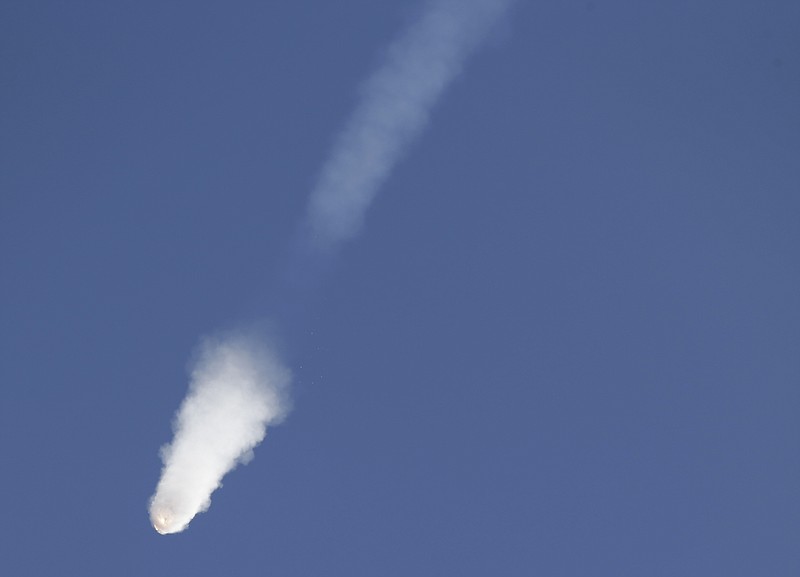CAPE CANAVERAL, Fla. (AP) - SpaceX suspects a 2-foot steel strut snapped inside its rocket and led to last month's launch accident.
The company's founder and chief executive, Elon Musk, said Monday that these struts had flown many times before without any problem. But two minutes into the June 28 launch, one of the struts in the second stage of the unmanned Falcon 9 rocket likely broke loose.
The strut was holding down a high-pressure helium bottle in the liquid oxygen tank. If the strut snapped as engineers believe, according to Musk, the bottle would have shot to the top of the tank at high speed, dooming the rocket and its Dragon supply ship for the International Space Station.
It was the third lost shipment for the orbiting lab in eight months. Russia has resumed deliveries, while SpaceX and Orbital Sciences Corp., NASA's contracted suppliers, remain grounded.
Musk stressed at a news conference that these are preliminary results. He declined to say when the California-based company might attempt another launch, but noted it should push out flights by maybe just a few months.
Preflight photos showed all of the struts to be fine. But after the accident, a few struts on the ground were found to be weak, and that's the basis for SpaceX's initial assessment of the accident, Musk told reporters.
The struts are 2 feet long and about an inch thick at its thickest. SpaceX does not make the struts, a supplier does. From now on, each one will be individually checked, Musk said, and the design and material may be altered for added strength.
The struts are designed to handle 10,000 pounds of force at liftoff; at the time of the accident, they would have been seeing only 2,000 pounds of force. A failure at such a low threshold is "pretty crazy," Musk said. The strut most likely failed at its attachment point, he added.
Another change: Beginning with its next launch, each Falcon rocket will be equipped with software for deploying the Dragon parachutes. The Dragon destroyed last month, along with an estimated $110 million worth of NASA equipment and supplies, would have survived if the parachutes normally used for descent at mission's end could have been activated, Musk said.
Musk pointed out that it's the first rocket failure in seven years for his company, which had 500 people then and 4,000 now. Most employees had only seen success - until June 28 - which means they might not have feared failure quite as much, he said.
Musk said before every launch, he sends out a companywide email encouraging workers to let him know if there is any possible reason for delaying the flight. He realizes some thought he was being paranoid.
"But I think now everyone at the company appreciates just how difficult it is to get rockets to orbit successfully," he said, "and I think we'll be stronger for it."
___
Online:
SpaceX: http://www.spacex.com/
